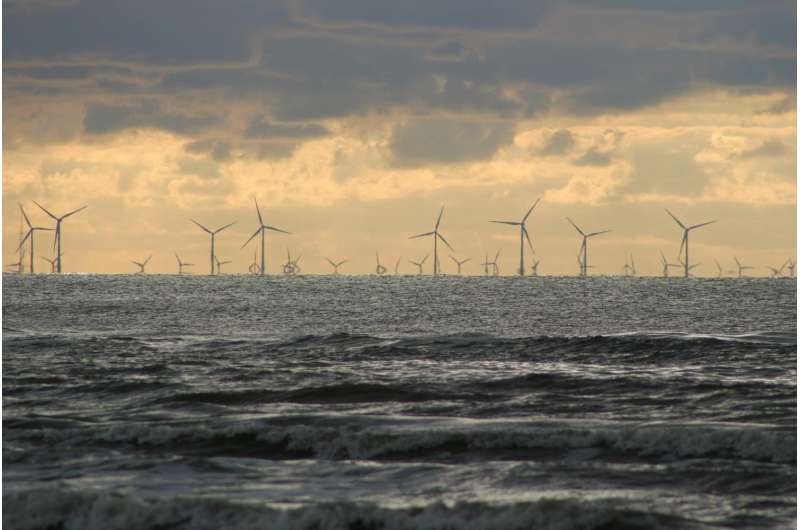Credit: CC0 Public Domain
Officials with the Danish energy company Ørsted have announced that they have achieved first power on the Hornsea 2 project—a new windfarm off the coast of England in the North Sea. As part of their announcement, posted on the company's web page, officials noted that once the windfarm is fully operational, it will represent the largest windfarm in the world.
Hornsea 2, as its name implies, is the second segment of a four-segment project. Hornsea 1 became operational last year and is currently the largest offshore windfarm—with its 174 turbines, the farm has a capacity of 1.2-GW—enough to power over a million homes in the U.K.
Hornsea 2 was approved for construction back in 2016—it will feature 165 8-MW turbines made by Siemens, which will give it a capacity of 1.32 GW. The offshore substation and reactive stations have been installed and tested while construction continues on the turbines. The windfarm will be located approximately 90 kilometers off the coast of Grims, England, which is not far from Leeds and Sheffield. Once the windfarm is fully operational, it will deliver power to a substation at Killingholme. The project will involve stringing cable under 390 kilometers of ocean water and then 40 kilometers of land before reaching the substation. Hornsea 2 will also be breaking another record—it will be located farther away from shore than any other large-scale windfarm.
The completion date for the windfarm is sometime next year—dates have been subject to change due to issues related to the pandemic. Officials with Ørsted claim that once Hornsea 1 and 2 are fully operational, together they will be generating enough electricity to power approximately 2.3 million homes. Interestingly, estimates of the number of homes that can be powered by such a large-scale wind farm vary by country—in the U.S., for example, the numbers are noticeably smaller due to much bigger houses with more energy demands.
Plans are also already underway for building Hornsea 3 and 4—once all four are up and fully operational, officials with Ørsted suggest the entirety of the project will go a long way toward helping the U.K government achieve its goal of net-zero by 2050.
More information: orsted.com/en/media/newsroom/n … 21/12/20211220460511
© 2021 Science X Network
























